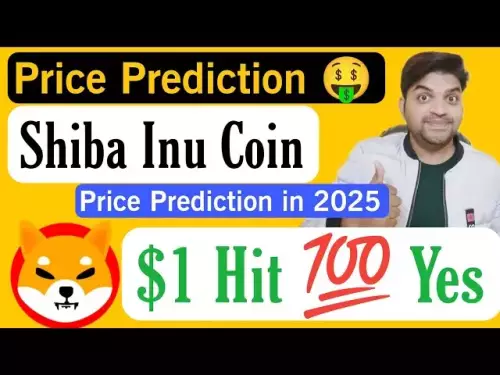-
 Bitcoin
Bitcoin $112600
1.22% -
 Ethereum
Ethereum $4365
1.75% -
 XRP
XRP $2.980
3.34% -
 Tether USDt
Tether USDt $0.9999
-0.02% -
 BNB
BNB $880.1
0.69% -
 Solana
Solana $215.1
5.29% -
 USDC
USDC $0.9997
-0.02% -
 Dogecoin
Dogecoin $0.2387
7.17% -
 TRON
TRON $0.3345
1.58% -
 Cardano
Cardano $0.8660
4.14% -
 Hyperliquid
Hyperliquid $51.23
7.74% -
 Chainlink
Chainlink $23.24
4.13% -
 Ethena USDe
Ethena USDe $1.001
-0.02% -
 Sui
Sui $3.493
2.83% -
 Stellar
Stellar $0.3791
4.86% -
 Bitcoin Cash
Bitcoin Cash $589.6
-1.93% -
 Avalanche
Avalanche $25.69
4.79% -
 Hedera
Hedera $0.2271
3.68% -
 UNUS SED LEO
UNUS SED LEO $9.536
-0.08% -
 Litecoin
Litecoin $113.4
-0.88% -
 Cronos
Cronos $0.2525
-2.65% -
 Toncoin
Toncoin $3.099
0.26% -
 Shiba Inu
Shiba Inu $0.00001295
4.28% -
 Polkadot
Polkadot $4.069
2.12% -
 Uniswap
Uniswap $9.737
4.16% -
 Ethena
Ethena $0.8029
7.58% -
 Dai
Dai $0.9997
-0.01% -
 World Liberty Financial
World Liberty Financial $0.2140
-4.28% -
 Monero
Monero $270.2
-0.53% -
 Aave
Aave $307.6
2.69%
What is a perpetual futures contract?
Perpetual futures are leveraged, expiration-free crypto derivatives where funding rates align prices with the spot market every 8 hours.
Sep 08, 2025 at 05:00 pm

Understanding Perpetual Futures Contracts
1. A perpetual futures contract is a type of derivative product commonly used in cryptocurrency trading that allows traders to speculate on the price of an asset without an expiration date. Unlike traditional futures contracts that settle on a specific date, perpetuals can be held indefinitely as long as margin requirements are met.
2. These contracts are primarily settled in stablecoins or the native currency of the exchange, such as USDT or BTC. This design enables continuous trading and makes them ideal for both short-term scalping and long-term directional bets.
3. The absence of an expiry removes the need for constant rollover, a common issue with dated futures. Traders can maintain positions for as long as they choose, provided they manage funding payments and maintain sufficient collateral.
4. Perpetual contracts are often leveraged, allowing traders to control large positions with relatively small capital. Leverage can amplify both gains and losses, making risk management essential.
5. They are widely available on major crypto derivatives exchanges such as Binance, Bybit, and OKX, contributing significantly to the overall trading volume in the digital asset space.
How Funding Rates Work
1. Funding rates are periodic payments exchanged between long and short traders to anchor the price of the perpetual contract to the underlying spot market. These payments occur every 8 hours on most platforms.
2. When the contract trades above the spot price, the funding rate is positive, meaning longs pay shorts. This incentivizes more short positions, helping to bring the contract price back in line with the index.
3. Conversely, when the contract trades below the spot price, the rate turns negative, and shorts pay longs. This mechanism discourages excessive bearish sentiment and stabilizes pricing.
4. The rate is determined by the difference between the mark price and the index price, along with an interest rate component, though the latter is often negligible.
5. Traders must monitor funding rates closely, especially when holding positions over extended periods, as frequent payments can erode profits or deepen losses.
Risk Management in Perpetual Trading
1. Due to the leveraged nature of perpetual contracts, liquidation is a real risk. If the market moves against a position and the margin balance falls below the maintenance threshold, the position is automatically closed.
2. Traders use stop-loss orders and take-profit levels to manage exposure. Some platforms offer conditional orders that trigger when certain price or margin conditions are met.
3. Position sizing is critical. Allocating too much capital to a single leveraged trade can lead to significant drawdowns during volatile market swings.
4. Monitoring open interest and liquidation levels on price charts can provide insight into market sentiment and potential price traps set by large liquidations.
5. Using isolated margin mode allows traders to limit risk to a specific amount, preventing the entire account balance from being wiped out by a single losing trade.
Common Questions About Perpetual Futures
What determines the mark price of a perpetual contract?The mark price is calculated using a combination of the latest index price and a time-weighted average of recent trades. It prevents manipulation and ensures fair liquidation pricing.
Can I go long and short on the same perpetual contract?Most exchanges operate under a one-way position mode by default, meaning long and short positions offset each other. However, some platforms offer hedge mode, allowing simultaneous long and short positions.
How often are funding rates applied?Funding is typically exchanged every 8 hours, at set intervals such as 00:00, 08:00, and 16:00 UTC. The exact timing depends on the exchange.
Are perpetual contracts available for all cryptocurrencies?Major assets like Bitcoin and Ethereum have deep liquidity in perpetual markets. Smaller altcoins may have perpetuals on select platforms, but with higher spreads and lower volume.
Disclaimer:info@kdj.com
The information provided is not trading advice. kdj.com does not assume any responsibility for any investments made based on the information provided in this article. Cryptocurrencies are highly volatile and it is highly recommended that you invest with caution after thorough research!
If you believe that the content used on this website infringes your copyright, please contact us immediately (info@kdj.com) and we will delete it promptly.
- Meme Coins, Market Cap, and DeFi: A New Yorker's Take on the Crypto Circus
- 2025-09-09 00:25:15
- Bitcoin Locked Away: Is the Next Move a Breakout?
- 2025-09-09 00:25:15
- Fintech, Crypto, and Worldcoin: A New Yorker's Take on the Future
- 2025-09-09 00:30:12
- MAGACOIN, Presale, Crypto ROI: What's the Buzz in the Crypto Space?
- 2025-09-09 00:30:12
- Tesla's Remote Unlock Vulnerability: API Tokens and the Price of Convenience
- 2025-09-09 00:35:14
- Kraken, Pantera, Eightco Investment: Decoding the Crypto Moves
- 2025-09-09 00:35:14
Related knowledge
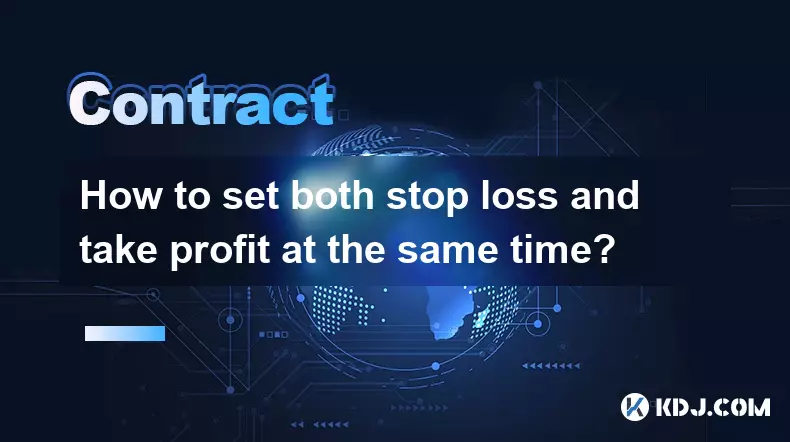
How to set both stop loss and take profit at the same time?
Sep 06,2025 at 04:36pm
Understanding Simultaneous Stop Loss and Take Profit Orders1. Placing both stop loss and take profit orders at the same time is a standard practice in...

What is copy trading for crypto futures?
Sep 07,2025 at 02:00am
What Is Copy Trading in Crypto Futures?1. Copy trading in crypto futures allows investors to automatically replicate the trades of experienced traders...
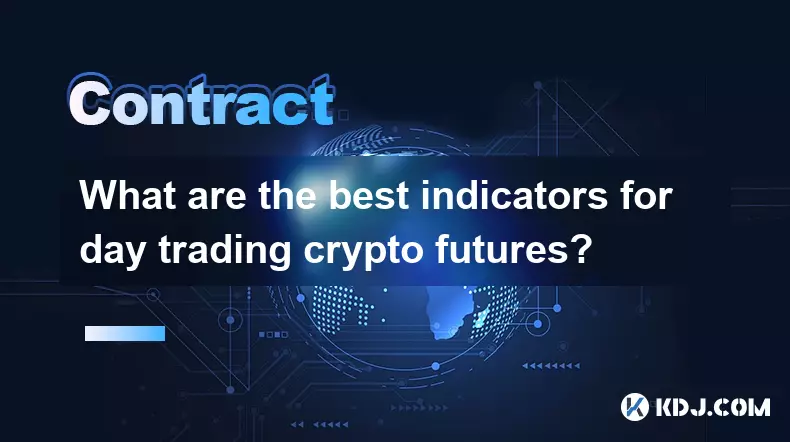
What are the best indicators for day trading crypto futures?
Sep 08,2025 at 10:18am
Top Technical Indicators for Crypto Futures Day Trading1. The Relative Strength Index (RSI) is widely used to identify overbought or oversold conditio...
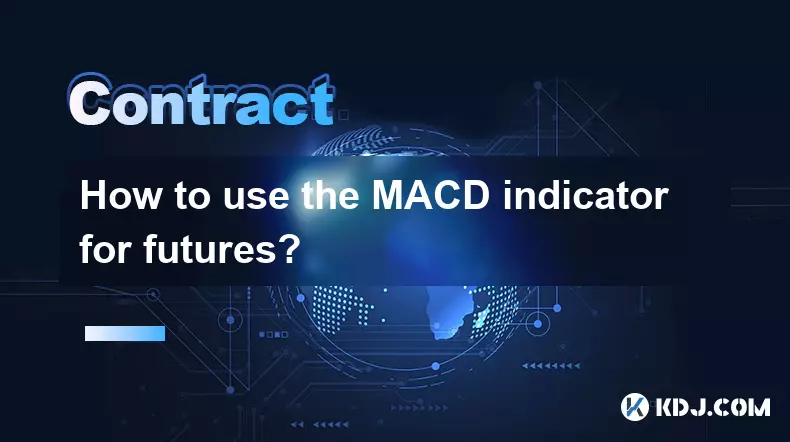
How to use the MACD indicator for futures?
Sep 07,2025 at 09:00pm
Understanding the MACD Indicator in Futures Trading1. The MACD (Moving Average Convergence Divergence) indicator is a momentum oscillator widely used ...

What to do if you are about to be liquidated?
Sep 06,2025 at 01:00am
Understanding Liquidation in the Crypto Market1. Liquidation occurs when a trader’s margin balance falls below the required maintenance margin, forcin...
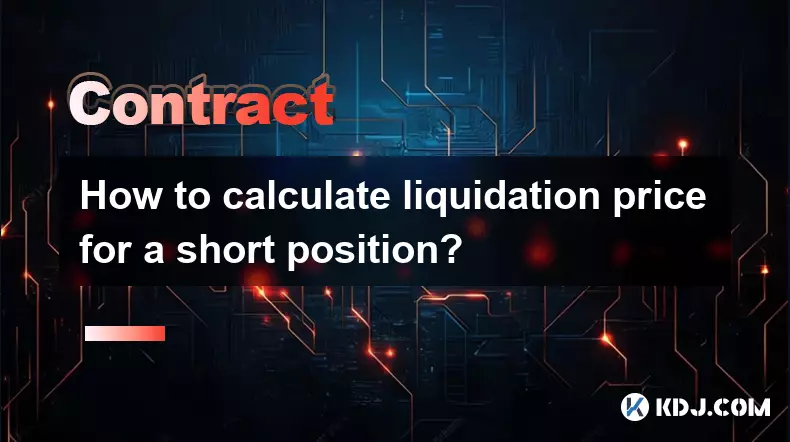
How to calculate liquidation price for a short position?
Sep 08,2025 at 03:54am
Understanding the Basics of Short Position Liquidation1. A short position in the cryptocurrency market involves borrowing an asset and selling it imme...

How to set both stop loss and take profit at the same time?
Sep 06,2025 at 04:36pm
Understanding Simultaneous Stop Loss and Take Profit Orders1. Placing both stop loss and take profit orders at the same time is a standard practice in...

What is copy trading for crypto futures?
Sep 07,2025 at 02:00am
What Is Copy Trading in Crypto Futures?1. Copy trading in crypto futures allows investors to automatically replicate the trades of experienced traders...

What are the best indicators for day trading crypto futures?
Sep 08,2025 at 10:18am
Top Technical Indicators for Crypto Futures Day Trading1. The Relative Strength Index (RSI) is widely used to identify overbought or oversold conditio...

How to use the MACD indicator for futures?
Sep 07,2025 at 09:00pm
Understanding the MACD Indicator in Futures Trading1. The MACD (Moving Average Convergence Divergence) indicator is a momentum oscillator widely used ...

What to do if you are about to be liquidated?
Sep 06,2025 at 01:00am
Understanding Liquidation in the Crypto Market1. Liquidation occurs when a trader’s margin balance falls below the required maintenance margin, forcin...

How to calculate liquidation price for a short position?
Sep 08,2025 at 03:54am
Understanding the Basics of Short Position Liquidation1. A short position in the cryptocurrency market involves borrowing an asset and selling it imme...
See all articles
























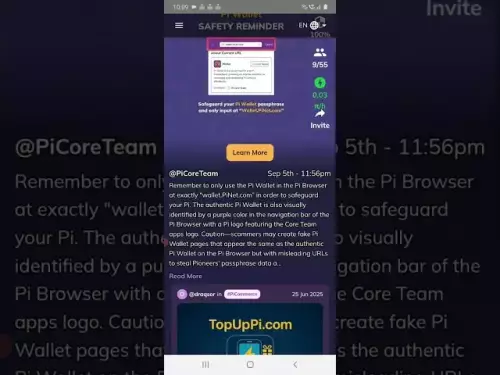
![[Pycoin] PI Coin -US President (Trump) Declaration ?? !! 'US' runs first. / Paikoin mining speed acceleration [Pycoin] PI Coin -US President (Trump) Declaration ?? !! 'US' runs first. / Paikoin mining speed acceleration](/uploads/2025/09/08/cryptocurrencies-news/videos/pycoin-pi-coin-president-trump-declaration-runs-paikoin-mining-speed-acceleration/68bed38c01e7a_image_500_375.webp)
